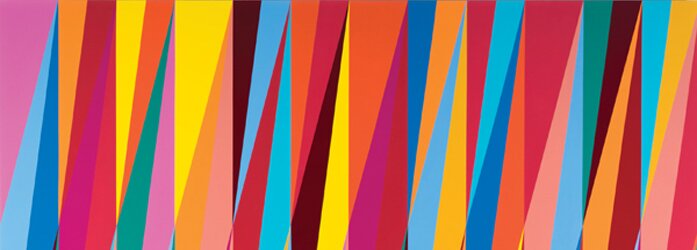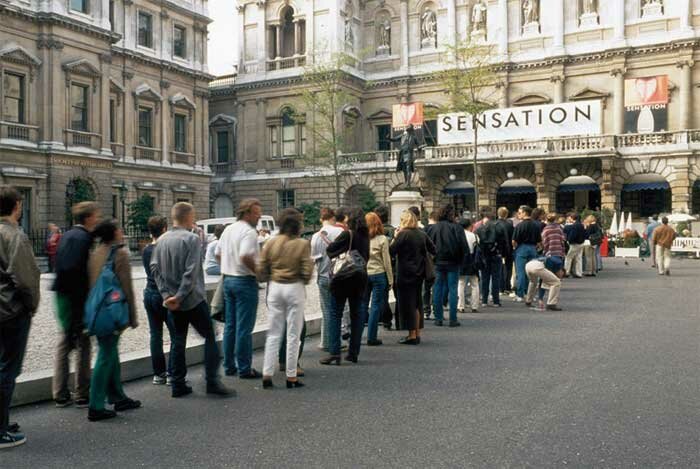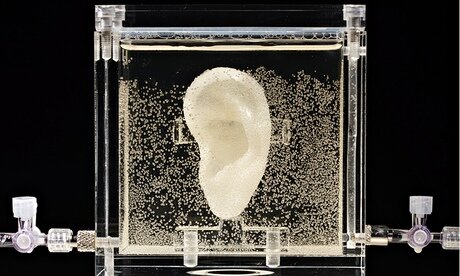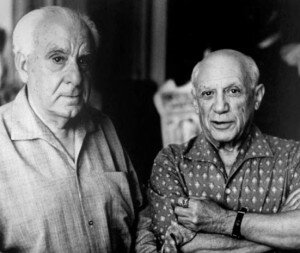 Odili Donald Odita, Firewall, 2013. ©ODILI DONALD ODITA/COURTESY THE ARTIST AND JACK SHAINMAN GALLERY, NEW YORK
Odili Donald Odita, Firewall, 2013. ©ODILI DONALD ODITA/COURTESY THE ARTIST AND JACK SHAINMAN GALLERY, NEW YORK
The Changing Complex Profile of Black Abstract Painters
“Donald Judd didn’t have to explain himself. Why do I have to?” asks Jennie C. Jones, an African American abstract painter who has grappled with the issue of how her work can or should reflect her race. “Fred Sandback can make this beautiful line and not have to have it literally be a metaphor for his cultural identity.”
Jones, 45, sidestepped the debates around multiculturalism that were raging when she was in school in the 1980s and gravitated toward Minimalism. Yet over the last decade, she has forged a conceptual link in her work between the histories of abstraction and of modern jazz in America—“black guys in the 1950s taking jazz into the concert hall and making it this bluesy hybrid with Bach,” as she puts it.
Francis Bacon’s portrait of Lucian Freud, owned by Roald Dahl, for sale
Children’s author bought Study for Head of Lucian Freud in 1967 for £2,850 – it is estimated it could get up to £12m at auction
A lojam of giant names in the arts comes together in one small canvas to be auctioned next month: Lucian Freud, painted by Francis Bacon, and owned by the late Roald Dahl. Dahl died in 1990, Bacon in 1992, and Freud in 2011. Although they later fell out, the young Bacon and Freud were close friends, who painted one another’s portraits – and Dahl was a great admirer and friend of Bacon’s. The renowned children’s author bought this Study for Head of Lucian Freud in 1967, the year it was painted, for £2,850 with the proceeds from one of his most famous books, Charlie and the Chocolate Factory. It will be sold next month at Christie’s estimated at up to £12m.
Moscow cancels YBA show over tensions in Ukraine
Russian sponsor pulls out of British Council-organised exhibition, a planned highlight of UK-Russia year of culture
The British Council has confirmed that a show on the Young British Artists (YBAs) in Russia has been cancelled because of international tensions over Ukraine, as we originally reported in our June issue (The Art Newspaper, June 2014, p3). In a statement, the council explains that the Moscow venue for the exhibition, the Ekaterina Cultural Foundation, has “reluctantly had to withdraw due to not being able to raise the sponsorship funding they had originally been confident of achieving”. The money was promised by Vladimir and Ekaterina Semenikhin, who finance the Ekaterina Foundation. They later decided against sponsoring the YBA show because of Western criticism over Russian intervention in Ukraine.
German museum exhibits Van Gogh’s ear replica grown from relative’s cells
Copy of artist’s ear is made of living cells grown from samples provided by the great-great-grandson of Van Gogh’s brother
A German museum has put on display a copy of Vincent ‘s ear that was grown using some of the Dutch artist’s genetic material. The 19-century painter is said to have cut off his own left ear during a psychotic episode in 1888. The Centre for Art and Media in Karlsruhe says the replica ear consists of living cells grown from samples provided by Lieuwe van Gogh, the great-great-grandson of Vincent’s brother Theo.
The museum says Lieuwe and Vincent van Gogh share about one sixteenth of the same genes, including the Y-chromosome that is passed down the male lineage. Artist Diemut Strebe told the Associated Press on Tuesday that she wanted to combine art and science. Strebe plans to display the ear in New York next year
The $20,000 Picasso Catalogue the Art World Was Waiting For
In the early 1930s, Christian Zervos, a refined and somewhat quirky art critic and publisher, and a fixture in Parisian artistic and literary circles—began cataloguing Picasso’s work. It was a labor that would occupy him for the rest of his life. The monumental 33-volume publication he compiled over four decades, entitled Pablo Picasso par Christian Zervos and generally known simply as “Zervos,” lists more than 16,000 paintings and drawings from throughout the Spanish master’s career. Picasso was intimately involved with the selection and arrangement.
“Zervos” became a rarity almost as soon as the last volume was published, in 1978, by which time both its subject and its author were deceased. Now, however, “Zervos” is back in print in an updated, near-facsimile version. With a price tag of $20,000, the reissued “Zervos” might seem too costly for most Picasso devotees, but in fact the catalogue is still an indispensable reference tool for Picasso specialists and scholars, in part because there has been no comprehensive cataloguing of Picasso’s vast oeuvre in the intervening years, and authenticating his work has been at times a pitfall-ridden process. So with full sets of the original “Zervos” fetching as much as $200,000 at auction, the new publication may be less nostalgic and more practical in wider Picasso circles.
Jeff Koons: From 27 Jun 14 to 19 Oct 14
Jeff Koons is an evangelist who believes in the power of his word. And like all good pastors, he guides his flock with gentle persuasion. In 2012, when he was interviewed by the British model Naomi Campbell for Interview magazine, he coached her through the conversation, planting ideas along the way that she later seemingly discovered on her own. He told her that his work was “anti-criticism, anti-judgment” because it did not demand any prior knowledge to be understood. He explained that some people simply could not understand that, so they called his art kitsch. “I don’t like that word,” Campbell replied, and Koons echoed dutifully, as if it had been her idea all along.
“I don’t like that word either,” he said, “because even using that word is making a judgment.” Outmanoeuvering criticism has been Koons’s major strategy.
 LIVE FEEDS
LIVE FEEDS






 Sneak Peek at the Royal Academy Summer Exhibition 2014
Sneak Peek at the Royal Academy Summer Exhibition 2014
 Josef Albers ”Black and White Exhibition” at Waddington Custot Galleries
Josef Albers ”Black and White Exhibition” at Waddington Custot Galleries
 Prix Pictet photography prize winner announced: Michael Schmidt
Prix Pictet photography prize winner announced: Michael Schmidt
 Clerkenwell Design Week | 20-22 May
Clerkenwell Design Week | 20-22 May
 Contini Art UK- New gallery opening in Mayfair
Contini Art UK- New gallery opening in Mayfair
